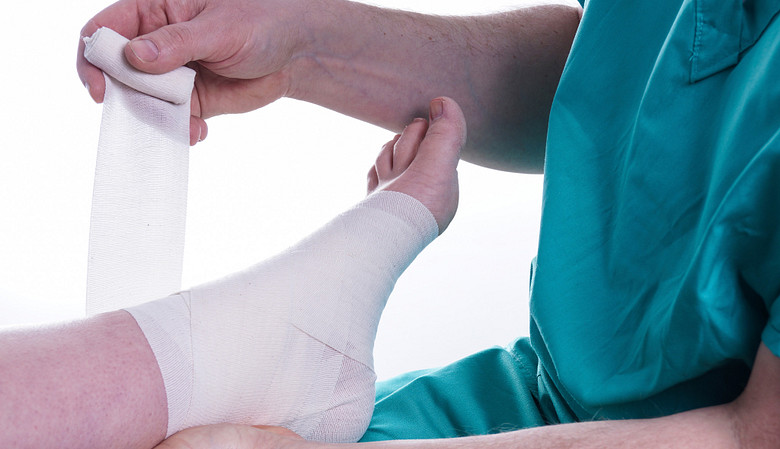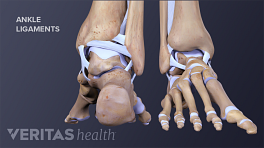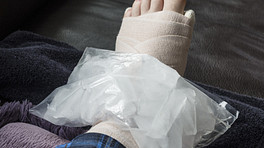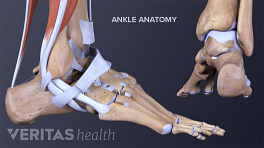Maybe you were getting really into a new class at your gym. Or maybe you simply stepped awkwardly off the curb. No matter how it happened, your ankle is now painful and swollen, showing every sign of being sprained.
Bandaging a sprained ankle helps stabilize the joint to tissues can heal. Read: Ankle Sprain and Strain Treatment Options
What you do in the first few hours and days after a sprain can help you lessen the pain and heal more quickly, so brush up on these ankle sprain care tips.
The first 24 to 72 hours
Ankle sprains are very common injuries that can affect anyone—from professional athletes to those with limited mobility, from children to adults. They occur when the ligaments that support the ankle go beyond their normal range of motion and become stretched or torn.
See Ankle Sprain and Strain Risk Factors
If you suspect you may have sprained your ankle, the first step is to check for the symptoms of a sprain:
- Sudden, sharp pain that forces you to immediately stop moving or take weight off the ankle
- Pain that's located on the spot of the injured ligament (for example, on the inside of your ankle)
- Swelling or bruising at the site of the sprain
- Limited or no ability to move the ankle a certain way or stand on it
Next, you should follow the tried-and-true treatment protocol of R.I.C.E.: rest, ice, compression, and elevation.
Rest: Avoid activities that actively cause pain in your ankle. However, you still want to promote faster healing by doing simple range-of-motion stretches or isometric moves with the ankle—as long as they don't cause pain.
Ice: Treating a sprain with ice can reduce pain and swelling. When you ice your ankle, make sure you use a cloth barrier between the ice and your skin and limit icing session to 10 to 15 minutes every 1 to 2 hours.
Compression: An elastic bandage can bring down swelling and stabilize the joint. Wrap it snugly, but not so tight that it causes numbness or tingling. And remove or significantly loosen it when you go to bed at night.
Elevation: By keeping your ankle elevated above the level of your heart, you can help reduce swelling and pain. Prop up your leg during the day, and put a pillow beneath your ankle in bed at night.
You can also relieve pain by using topical creams or taking acetaminophen (Tylenol) or NSAIDs such as ibuprofen or naproxen (Aleve).
After 2 to 3 days
After a few days of using the R.I.C.E. protocol, a mild sprain will be mostly healed and ready for you to resume normal activity. A moderate or severe sprain may require you to keep up these treatment steps for longer—up to several weeks.
When to get help for a sprained ankle
Someone with a sprained ankle should go to the ER right away if it any of the following occurs:
- The joint appears deformed
- The injured person is pale or has an unsteady pulse
- The injured person experiences paralysis, tingling, or extreme pain
You may also need to see your doctor or a specialized sports medicine doctor if you have a severe sprain and/or your symptoms persist despite practicing R.I.C.E. at home.
See Acute Injury: Additional Treatment Considerations










